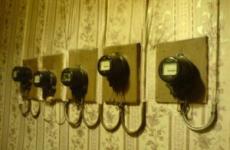Indoor antenna for all TVs. The subtleties of the choice of indoor antenna
A modern indoor antenna is not only a practical gadget for setting up digital TV, but also a stylish piece of furniture. This article will tell you about the variety of antennas that exist today and the intricacies of their choice.
1. The main use cases of indoor antennas.
First of all, indoor antennas are used in a situation where the house is located in the immediate vicinity of the broadcasting tower - up to about 10 km. When placed close to the TV tower, it is desirable to use a less sensitive antenna, i.e. Often in such situations, a simple passive antenna is sufficient without any amplifier. Also, the use of indoor antennas is resorted to when it is not possible to use an outdoor antenna - for example, when there is no access to the roof in an apartment building. In such a situation, it is especially practical to use so-called windowed indoor antennas - they can be mounted on the window. When using a window antenna, it is better to place it on a window that directly faces the tower, if of course there is such an opportunity. Even window antennas will be an excellent solution in the case when the walls of the house are very strongly shielded by the digital signal, and it practically does not get inside the house. In this case, window antennas can even compete with powerful outdoor antennas.
2. Antenna amplifier: built-in or external?
As mentioned above, the choice of antenna gain depends on how far the house or apartment is from the broadcasting tower - the closer the house is to the tower, the less sensitive the antenna should be. In this case, you should not forget about the presence of obstacles in the way of transmitting the signal from the tower: the tower may be close, but there may be small, but strongly shielding objects in the signal path. As a rule, indoor antennas are not equipped with powerful amplifiers, but sometimes there are situations when the signal needs to be further strengthened. For example, when the antenna is far away from the TV, and a long cable is used to connect it - due to the use of a long cable, a weakening of the transmitted signal may be observed. To enhance this signal, it is worth using an external antenna amplifier.
Also, an external amplifier is needed when two or more TVs are connected to one antenna - in such a situation, a loss of signal quality can also occur, and an external antenna amplifier can be used to compensate for it. There are active indoor antennas with a manual control of the level of signal reception - for example, the models "" and "". However, we note that in a situation where the incoming signal is blocking the walls of the house and the signal is hard to catch indoors, it is better to use an antenna with automatic adjustment of the signal reception level.
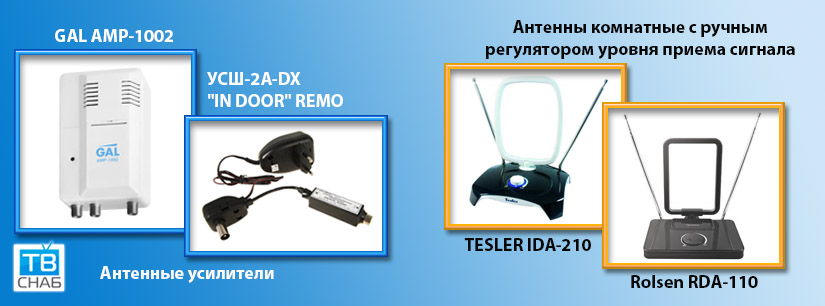
3. Power room antenna.
Indoor antennas may have different power sources. Some antennas have external power supplies that come with them in the configuration, some antenna models can be powered by TVs or digital receivers. It is worth noting, however, that not all TVs have the appropriate functionality to power the antenna. At the same time, almost all digital receivers have such a function. As a rule, in the menu at the receivers there is such an option as “Switch on the power of the external antenna” - when this option is activated, the antenna will constantly receive power from the receiver. To date, there are also some models of antennas that are powered by the receiver / TV by connecting to the latter via USB. For example, the model "".
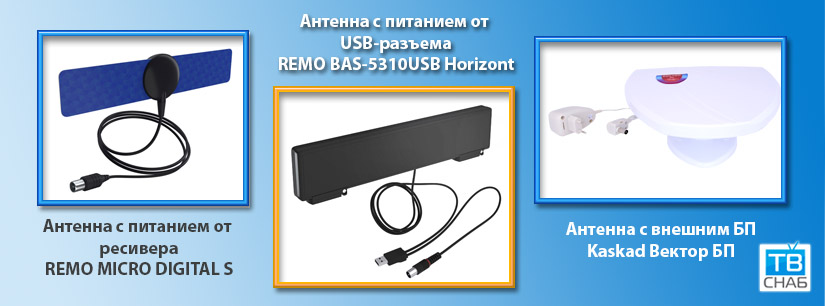
4. Is the antenna digital or universal?
When choosing a room antenna, you should immediately determine what type of signal you plan to receive on it. If only a digital signal is needed, then preference can be given exclusively to digital or decimeter antennas. If except digital signalneed to be received and set up analog signal (for example, when local TV channels are broadcasting in the region, which you also want to receive), then you should pay attention to universal antennas. Universal antennas accept all types transmitted signals and, as a rule, they have in their design movable telescopic deflectors or the so-called "whiskers".
5. Modern versions of the antenna.
Modern versions of indoor antennas will delight the most sophisticated consumer. For example, in our online store there are antennas with a stand for their compact placement on the table and on the shelf, in the presence of the antenna, which can be attached to the TV on a bracket or on a suction cup. There are also the above-mentioned window antennas, which are attached to the window glass by means of special suction cups, for example, the “Viva” antenna from the Remo brand. The design of modern antennas will delight the most sophisticated customer - along with the usual antennas with a "mustache", there are also antennas with very peculiar designs. For example, a round antenna "
Reception digital television With the help of a special antenna, it is much easier to receive analog TV, surprisingly enough. To enjoy DVB-T2, you only need to buy one digital antenna UHF range, in which DVB-T2 broadcasts digital channel packages (multiplexes).
From January 2015, the third multiplex on channel 34, with a wide list of programs, began broadcasting from the Ostankino Tower in Moscow and the Moscow Region. To get access to all programs, you should choose a high-quality and modern antenna, and we will be happy to help you with this.
Firstly, it is well worth separating the antennas for satellite broadcast and digital:
The optimal antenna for digital television - this model of the antenna, which can perform reliable reception in the UHF (often these antennas are called decimeter),
Optimal antennas for satellite broadcasting are plates, i.e. large outdoor antennas with high gain. Thus, satellite dishes differ from antennas for digital broadcasting gain, range and price accordingly. Also worth remembering that the indoor antenna in any case can not be satellite.
Secondly, all antennas are divided into two main classes:
Directional antennas are ideal in the case when there is an exact certainty on which side the signal is coming from. Such antennas have higher gain and at the same time they cut off all the noise coming from other sides, and increase the sensitivity in a given direction.
Omnidirectional antennas - do not require a clear direction towards the TV tower and are very convenient in places where there are various obstacles in the path of a direct signal - high-rise buildings, for example.
Thirdly, at the location of the antenna there are indoor and outdoor. They are also divided into active and passive antennas - depending on the presence of a built-in signal amplifier in the antenna. If you live near the TV tower, it is advisable to use passive antennabecause using an active amplifier model can cause signal distortion. If your house is at a considerable distance from the TV tower and there are various obstacles in the way of signal transmission (buildings, trees), then it is recommended to use an active antenna with a signal amplifier.

The TV-Snab online store has a wide range of antennas for receiving the digital signal dvb-t2 from manufacturers such as BBK, Mystery, Rolsen, Supra, Tesler. Among the presented range of antennas are indoor and outdoor, passive and active, directional and omnidirectional. According to the results of a small survey of visitors to our online store, the following rating of antennas for digital TV was formed:
and (two models differ in color) - models have a built-in signal amplifier, and are also omnidirectional.
- compact size, stylish design and good technical data: low-noise signal amplifier.
- reliable and easy to use outdoor antenna. It has a stylish and durable waterproof case, equipped with built-in and external signal amplifier.
- elegant design, signal amplifier, radio reception, as well as the presence of a regulator to fine-tune the required signal level.
- convenient and reliable active antenna with an attractive price.
In order for the antenna for the TV to serve properly and not cause difficulties in the work in the country or in the apartment, you need to choose the right indoor (indoor) or outdoor digital device. There are several criteria for the purchase of a teleantenna - signal reception strength, gain, activity. Familiarize yourself with well-known manufacturers of devices, the secrets of antenna selection.
Types of antennas for the TV
In Russia, the signal level of television waves is different, therefore, home antennas are highly sensitive, which ensures reception in almost any conditions. There are parabolic, indoor and outdoor antennas, which are divided into several categories. To receive a television wave without interference, you need an individual selection. type and power.
Satellite dishes for tv
Parabolic television antennas are popular. They are distinguished by work stability, high quality signal reception and an increased number of channels. Equipment of this type consists of a receiver, receiver for decoding. The antenna receives waves from the satellite, so the clarity of the image depends on locationunit and tv.
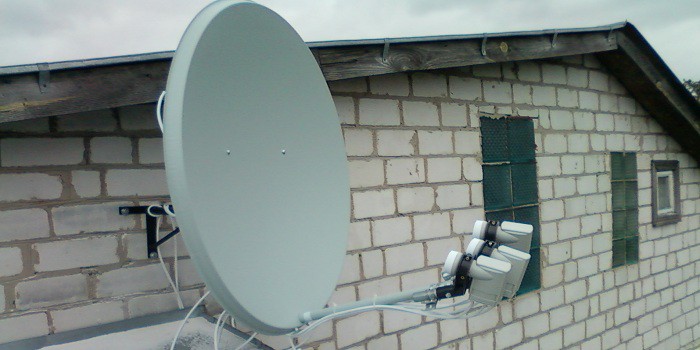
Out of focus
This type of converter feed “looks” below the horizon, which protects the signal receiver from negative atmospheric exposure:
- model Name: MULTI Toroidal;
- price: 1100 rubles;
- characteristics: diameter - 100 cm, adoption from 16 satellites;
- advantages: ease of adding channels;
- cons: The quality of receipt varies.
In a small house or in the country will come in handy 60 cm satellite dishwhich is a bit more expensive than the first:
- model Name: Triax TD-064;
- price: 1300 p .;
- characteristics: 60 cm;
- advantages: resistance to precipitation, corrosion;
- cons: the cost of satellite TV channels is high.
For those who do not want to bother with a complex structure, a ready-made kit will do. satellite tv:
- model name: NTV +;
- price: 7050 p .;
- characteristics: interactive console, movie library;
- pluses: decoding;
- cons: may be interference.
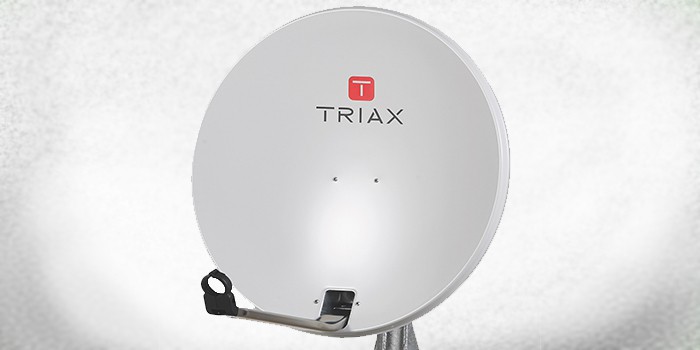
Offset
The advantage of using offset antennas is a larger viewing angle and improved image quality:
- model name: Supral;
- price: 1400 p .;
- characteristics: 80 cm;
- advantages: anti-corrosion coating, wall bracket;
- cons: no
The following subtype has a slightly larger diameter, which is suitable for taking any waves:
- model Name: Universal;
- price: 1200 p .;
- characteristics: 90 cm, aluminum alloy;
- pluses: compatibility with different sockets of the TV;
- cons: no attachment.
The third option of the offset antenna will be a set of satellite television at an affordable cost:
- model Name: D-Color DCA-101;
- price: 253 p .;
- characteristics: dimensions 30 * 20 cm;
- pluses: compactness, power amplifier from the console, little noise;
- cons: no
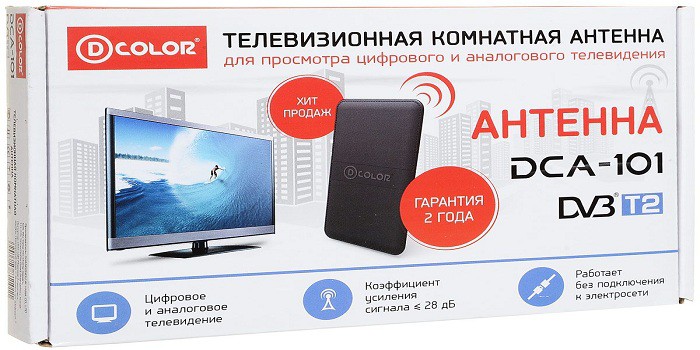
Outdoor antennas for TV
If the customer lives away from the TV signal transmitters, then outdoor elements will help enhance the reception. Outdoor options take television wavelengths up to 60 km from the transmitter. For proper selection, you need to know the distance to the nearest tower, find out the need for wave amplification. To achieve a high-quality picture, it is recommended to install the unit at the highest point above the house.
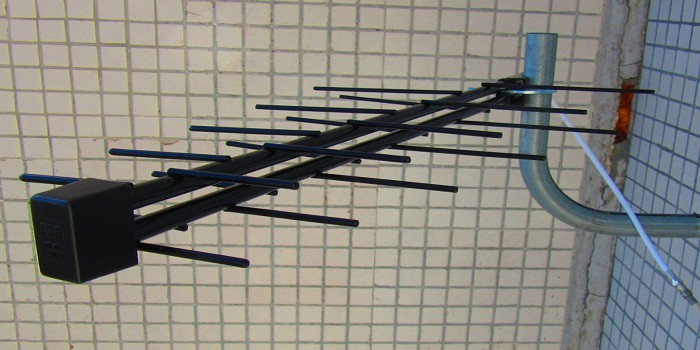
Active
The active antenna for TV is completed with a special power amplifying device. This helps to improve the clarity of the TV picture at a far located TV tower:
- model name: Funke ABM 3553;
- price: 2300 p .;
- characteristics: 75 Ohm, size 1.38 m;
- pros: works in difficult reception conditions, made of anodized aluminum;
- cons: large size, no cable and power supply.
A more affordable antenna is the following, differing design features:
- model Name: Cadena AV;
- price: 1550 p .;
- features: DVB-T / DVB-T 2;
- pros: there is a bracket;
- cons: power through the adapter.
Another popular affordable budget option will be the following long-range unit:
- model name: Rexant ABM 3529;
- price: 2064 p .;
- characteristics: 68 cm;
- pros: there is protection against corrosion and ultraviolet radiation;
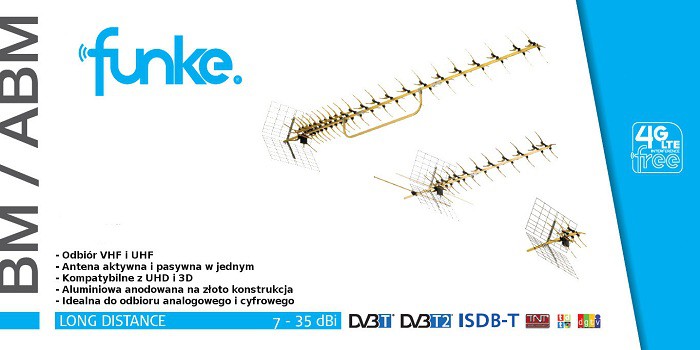
Passive
In the absence of obstacles, passive devices to the TV can be used, which are cheap and do not need reinforcing technology:
- model name: GELLAN FULLBAND-15;
- price: 1264 p .;
- characteristics: up to 2700 MHz, 50 Ohm, parameters - 240 * 240 * 40 mm, operating conditions - wall;
- pluses: vertical polarization;
- cons: improves the signal at a distance of 10 km.
The second popular brand is the Dutch Funke, which is expensive, but justifies the parameters:
- model name: Funke BM 4527;
- price: 1413 p .;
- characteristics: 75 Ohm, 685 mm;
- pros: anodized aluminum;
- cons: no cable and power supply.
The third most popular among buyers of televisions is the Locus antenna, which is available at a price that is on sale with discounts:
- model name: antenna Locus L 021.12;
- price: 1300 p .;
- characteristics: radius of action 55 km, 1.31 kg, 1.4x2 m;
- pros: ease of assembly;
- cons: no wire.
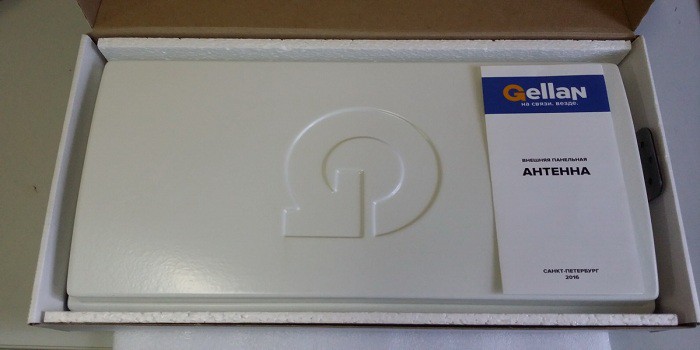
Rod
The traditional antenna for the TV has a core system consisting of metal semi-vibrators:
- model Name: Jablotron AN-05 GSM;
- price: 1428 p .;
- characteristics: frequency 900-1800 MHz, cable length - 3 m;
- pluses: magnetic base;
- cons: may be interference.
A product of another manufacturer that produces dipole devices for TVs is considered more expensive and of higher quality:
- model name: ETS-LINDGREN;
- price: 3144 p .;
- characteristics: 80 MHz-2 GHz, parameters - 210x170x9 cm;
- pros: individual calibration, high gain;
- cons: weight 4.5 kg.
The most expensive device in the selection is considered to be released by the manufacturer according to military standards:
- model Name: Narda RA-01;
- price: 5000 rubles;
- characteristics: 9 kHz-30 MHz, weight - 1.5 kg, dimensions - 150x135x120 mm;
- pluses: individual antenna;
- cons: too expensive.
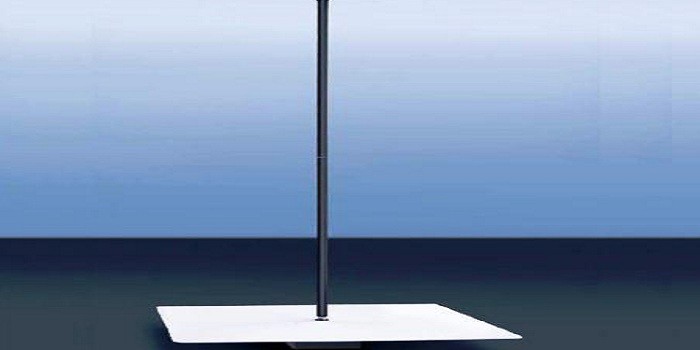
Framework
This subtype is represented by one or several turns of wires connected in one frame, in whose plane is the maximum intensity of the decimeter frequency range:
- model name: Garmin 220;
- price: 1490 p .;
- characteristics: compact;
- pluses: accepts any programs;
- cons: Delivery is required.
A simple device is the following, which is a magnetically generating type frame winding:
- model name: EMCO 7603;
- price: 1000 p .;
- characteristics: 20 Hz-50 kHz, 16 turns, diameter - 12, height - 8 cm;
- pluses: individual calibration, linear polarization, weight - 0.5 kg
- cons: not detected.
Frame antenna for TV manufacturer A.H.Systems - more affordable, easy to use:
- model Name: A.H.SYSTEMS SAS;
- price: 700 p .;
- characteristics: 1 kHz-30 MHz, 50 Ohm;
- pluses: weight of 1 kg, increased structural strength, mains adapter and preamp included;
- cons: the principle of battery life.
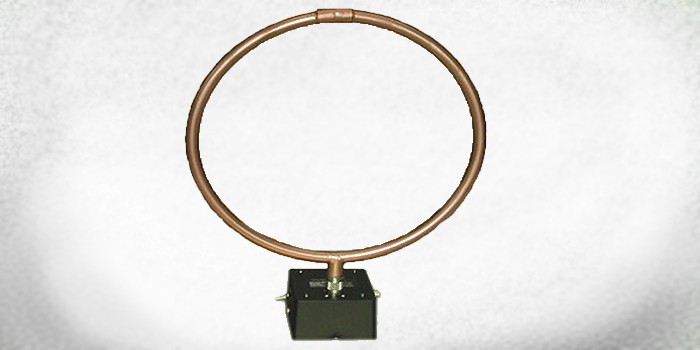
Indoor antennas for tv
If the signal from the telecentre is high-quality, an internal pick-up device is suitable, which is more convenient than the external one in terms of installation. Such options are cheap, suitable to any nest of the TV, transportable. Of the minuses - the complexity of image customization. There are analog, full-wave, broadband and narrowband variants.
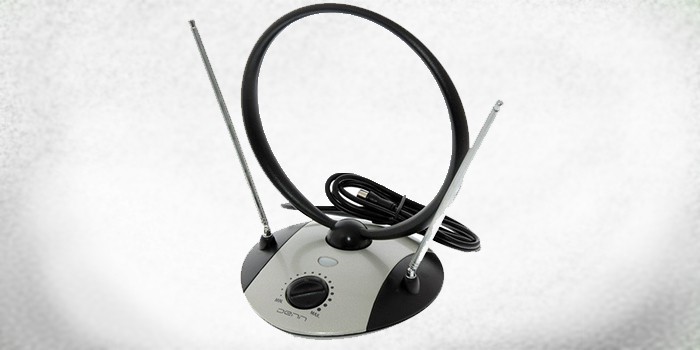
Digital
To receive digital image this subtype is used. With it, you can achieve high-quality images:
- model name: Funke Margon Home 2.0;
- price: 1450 p .;
- characteristics: 170-240 MHz;
- pros: 3.5 m indoor cord;
- cons: not equipped with a street cable.
The following TV antenna is more affordable and can be ordered by mail for a promotion:
- model name: BBK DA 19;
- price: 843 p .;
- characteristics: receiving HDTV-standards of air TV;
- pluses: little noise;
- cons: not detected.
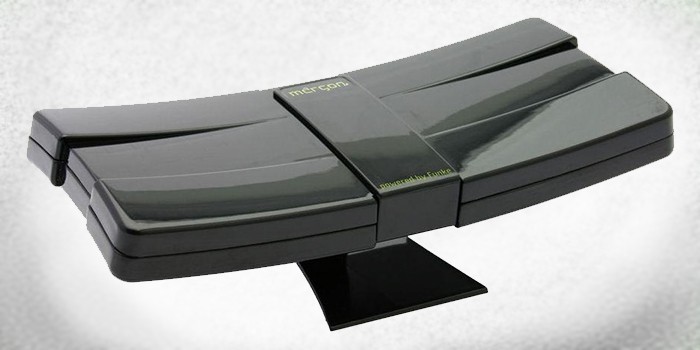
All wave
From the name it follows that the devices accept all kinds of frequencies (decimeter, meter), they are called universal:
- model name: Polish antenna Delta К331А.02;
- price: 1092 p .;
- characteristics: dimensions 280 * 680 * 120 mm;
- pluses: the adoption of any TV programs;
- cons: slight interference.
The domestic manufacturer is considered popular, the products are distinguished by favorable cost and free shipping when ordering from 3000 rubles:
- model name: SPI 918;
- price: 399 p .;
- characteristics: 75 Ohm;
- pluses: compact size;
- cons: no
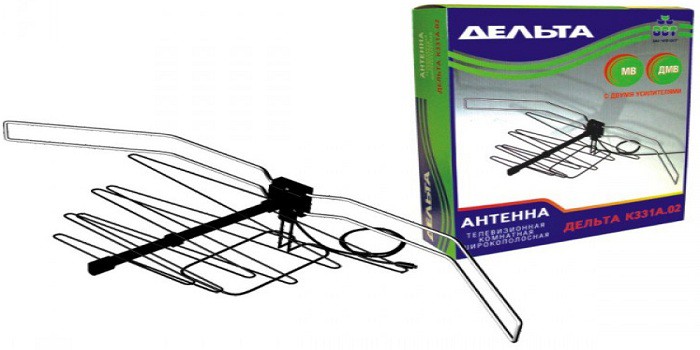
Broadband
The fan or broadband subtype is set to suburban areaslocated far from the transmitter:
- model name: Ramo Bas 5340 TV JET ANT-USB Horizon;
- price: 580 p .;
- characteristics: log periodic antenna;
- pluses: powered by USB or receiver;
- cons: only works in a zone of sustainable receipt.
Option installed on the ceiling, you can significantly enhance the reception on any television waves:
- model name: AO-700 / 2700-4;
- price: 599 p .;
- characteristics: weight 300 g, dimensions 185 * 100 mm;
- pluses: dome;
- cons: no wire.
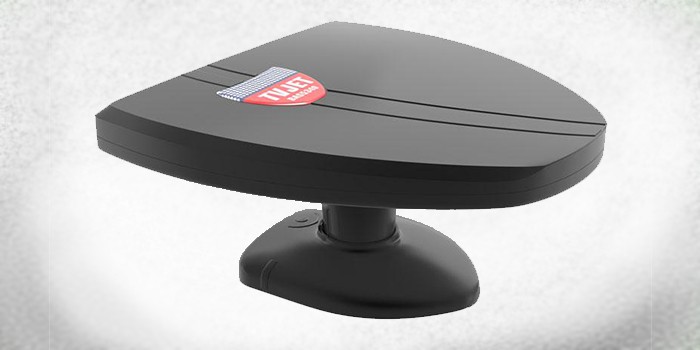
Narrowband
This term refers to narrowly focused TV options that catch a certain frequency, which reduces interference:
- model name: Romsat AV-2845;
- price: 600 p .;
- characteristics: cable length 14 m, telescopic, material - aluminum;
- pluses: not afraid of "wintering" in the country;
- cons: size 1035 mm.
A cheaper device is considered a simple construction of a domestic brand, made of plastic, which catches smaller channels:
- model name: Vector-PL-1 K;
- price: 450 p. on sale;
- characteristics: 5-128 V, 75 Ohm;
- pluses: wire 3 m;
- cons: plastic, a short distance from the tower.
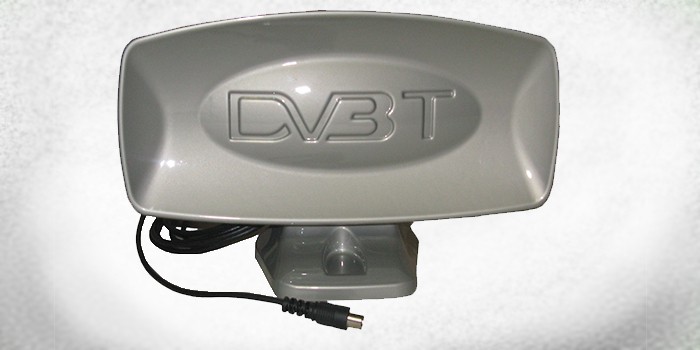
With amplifier
Room antennas with an amplifier for the TV will help to watch programs with a clear picture and a bright image:
- model name: Delta Satellite in dvb-t2 DS 1000 format;
- price: 1800 p .;
- characteristics: resistance to the effects of the sun, installation on the mast;
- pluses: built-in amplifier weak signal, catches the signal up to 80 km;
- cons: not found.
The following construction for the TV, which accepts digital and analog television coding, will cost two times cheaper:
- model name: Selenga 101 A;
- price: 843 p .;
- characteristics: cable length 1.2 m;
- pluses: compactness, weight 300 g;
- cons: plastic case.
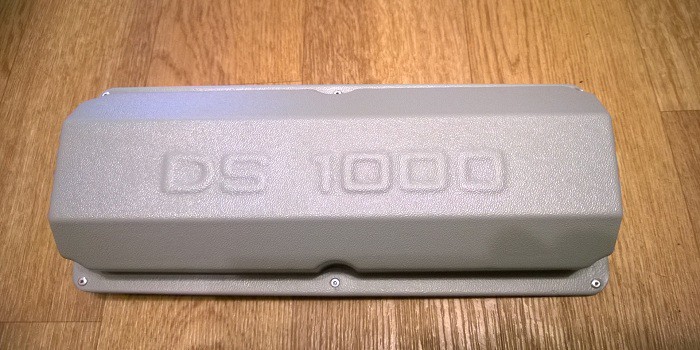
How to choose the antenna for the TV
The choice depends on where the structure is installed. Remote place fit street with an amplifier, city apartments - narrowband, active room, cars - frame. In villages and cottages, it is better to install parabolic plates. The choice depends on the criteria of distance, price range, amplification factor.
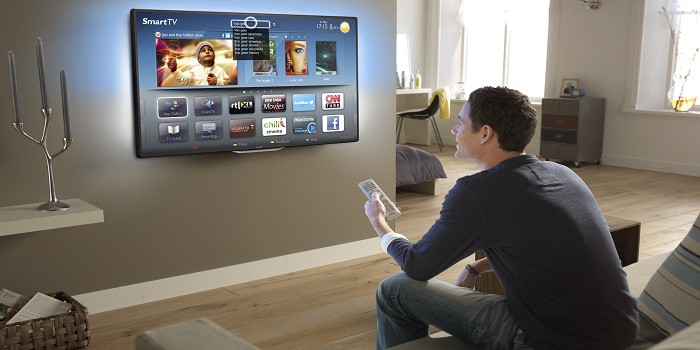
For auto
For high-quality TV reception, radio, navigator requires a combined GPS or GSM car unit. Parabolic will take all the programs, but will cost a lot. In-cabin active all-wave structures are equipped with an amplifier, external - passive, need an extension cord. Among the shortcomings of the latter, there is instability to corrosion.

To give
To watch TV in the country, it is better to buy an active design and set it as high as possible. The kit must include an amplifying element and an adapter; you will need to purchase a coaxial wire for charging. Exterior type should be on the roof. If the TV tower is nearby, the internal device will do. To listen to the radio, purchase broadband.
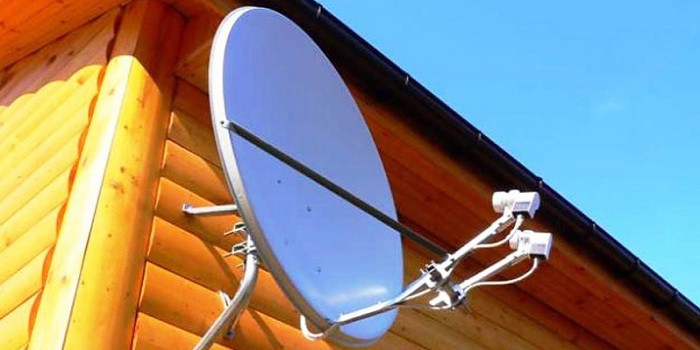
Homemade
In a city apartment or a country house it is easier to install a room unit on a TV, if before the repeater no more than 30 km. Otherwise, you will have to put outdoor (active or passive) or digital with the tuner. It is better to choose a rod (meter) or frame (decimeter signals) room: it is mobile, weighs less, is easily connected.
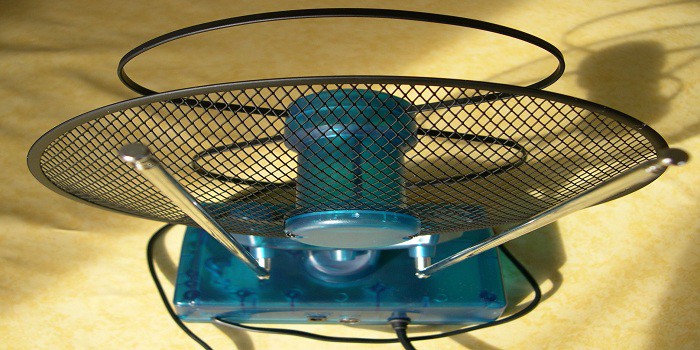
For digital television
Provide strong reception of the weak message and the high-quality image of the TV parabolic collective antennas. They feature an expanded channel package, increased stability. During installation, it is necessary to take into account the location of the unit relative to the broadcast source. Choose a dish is based on cost and capabilities.
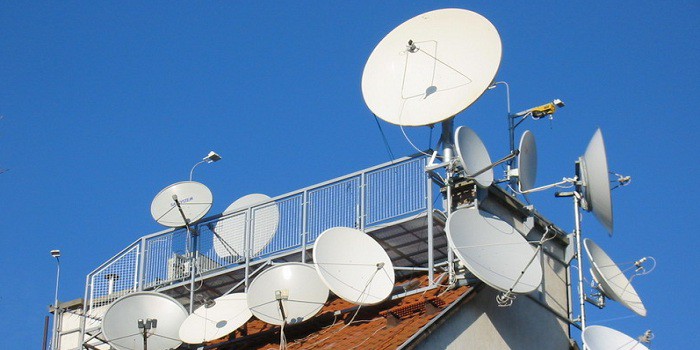
Video




